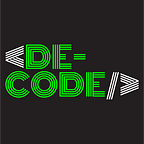Knowledge is power. Quantum Computing is ready to power knowledge!
Our human technology started with fire and sharp tools. We discovered nuclear energy and built plants to generate power. We have come a long way. We still have a long way to go. There’s no end point and there will never be one (until another asteroid hits us and we all die).
Since the 1960s the power of our machines has kept growing exponentially making the computers smaller and powerful. But this process is about to reach its limits. Computers are now almost size of an atom (example, single-atom transistors). To understand why this is a problem let’s go to the basics.
Quantum Computing: Simpler than your average simple!
A computer is made up of very simple components and doing very simple things; representing data (main memory), processing (arithmetic unit) and control mechanisms (control unit). In more simpler terms, Input →Process →Output. Computers contain circuit chips which contain basic modules which contain logic gates (AND, OR, NOT, XOR) which contain transistors. A transistor is the simplest form of a data processor, consider it a switch, which can allow or block the information coming through. This information is in bits (smallest unit of information) which can be either 0 or 1 (binary). The combination of bits allows us to do more complex things.
Transistors are combined to create logic gates which help in basic calculations. For example, an AND gate sends the output of 1 if all of its inputs are 1 and an output of 0 otherwise. A series of gates will help you in addition and subtraction, leading to multiplication. Once you can multiply, you open yourself to a lot of possibilities. Basic math operations are easy enough to understand by even a 7-year old. However, with parts getting tinier, quantum physics is making everything complex.
In a nutshell, a transistor is just an electric switch and electricity is electrons moving from one place to another. It can block the passage of electrons. A typical scale 4 transistor is 14nm ( 500 times smaller than a red blood cell). As transistors are shrinking to a size of only a few atoms, electrons might as well transfer themselves to another place (where there is a blocked passage) through quantum tunnelling. In the quantum realm, physics work quite differently and normal computers stop making sense.
We are approaching a real physical barrier for our technological progress. To solve this problem, scientists are using these unusual quantum properties to create a quantum computer. In normal computing, bits have two values (0: low charge and 1: high charge) but in quantum computing, there are qubits (quantum bits, with interchangeable values). A qubit can be any two-level quantum system such as a spin in a magnetic field or a single photon. 0 and 1 are two possible states, like horizontal and vertical polarisation. In the quantum world, a qubit doesn’t have to be in one of the two states, it can be in any proportion of both states at once called superposition. As soon as you test its value, by sending a photon through a filter it has to decide whether to vertically or horizontally polarise. Unobserved qubit is in a superposition alternating between the two values and you can’t predict until the instant you measure it. At that instant, it collapses to a definite state.
4 classical bits can be in one of 24 i.e. 16 possible combinations out of which you can use one. Qubits, however, can be in all of the 16 combinations at once. This number grows exponentially with each extra qubits. Twenty qubits can store more than a million values in parallel. More combinations result in more memory.
A really weird and unintuitive property qubits have is entanglement (a closed connection that makes each of the qubits react to the change of the other’s state instantaneously, distance no bar). So, while measuring one entangled qubit, you can deduce the property of its partner.
Another mind-bender is qubit manipulation. A simple logic gate gets a simple set of inputs and produces one definite output whereas a quantum gate manipulates the input of superposition, rotates probabilities and produces another superposition as its output. So, a quantum computer sets up some qubits, applies quantum gates to entangle them and manipulate the probabilities and then, actually measures the outcome of collapsing superposition into a combination of 0s and 1s. What does this mean? You get your all sets of calculations done at the same time. Ultimately, you can check one of the results and it might be probably the right one but you need to recheck it to make sure. However, by cleverly manipulating superposition, this can be more efficient than a regular computer (as it can’t process multiple outcomes in one go. Consider Doctor Strange with the time stone, maybe faster than him!)
Quantum computing enables us to improve processing speeds, complexity, and volumes without the corresponding increase in processor chip sizes. This is akin to the reduction in computer sizes from occupying an entire room to the size of the computer in your pocket today. While we feel our computers today are powerful enough to meet our needs, quantum computers will help us in ways we don’t see. From cryptography to adiabatic (Google it!) optimisation, this technology will power huge gains in the technology used in research and processing huge volumes of data. They say knowledge is power, quantum computing is what will power the next wave of knowledge.
